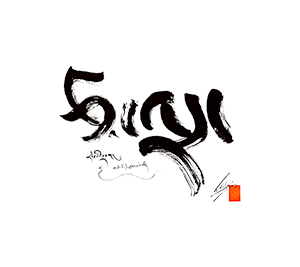The Basis for Buddhahood: The Naturally Luminous Mind and Buddha-Nature in the Early Mahāmudrā Tradition by Casey Forgues
No edit summary |
No edit summary |
||
| (2 intermediate revisions by the same user not shown) | |||
| Line 5: | Line 5: | ||
|header= Tathāgatagarbha Across Asia | |header= Tathāgatagarbha Across Asia | ||
|image= https://commons.tsadra.org/images/e/ea/Vienna-Symposium-Main-Banner.jpg | |image= https://commons.tsadra.org/images/e/ea/Vienna-Symposium-Main-Banner.jpg | ||
|content= | |content= In July 2019 Tsadra Foundation partnered with the University of Vienna to bring scholars together for an international symposium titled Tathāgatagarbha Across Asia. The presentations are available here. | ||
|watermark= | |watermark= Forum | ||
|classes=col-12 | |classes=col-12 | ||
}} | }} | ||
|PostToAudioStream=Yes | |PostToAudioStream=Yes | ||
}} | }} | ||
Latest revision as of 14:15, 6 August 2024
Abstract from the Author
Secondary Publications Mentioned
About the media
| Featuring | |
|---|---|
| Creator | Lua error in Module:GetMediaValue at line 1: Module:MediaData returned boolean, table expected. |
| Director | Lua error in Module:GetMediaValue at line 1: Module:MediaData returned boolean, table expected. |
| Producer | Lua error in Module:GetMediaValue at line 1: Module:MediaData returned boolean, table expected. |
| Publisher | Lua error in Module:GetMediaValue at line 1: Module:MediaData returned boolean, table expected. |
| Translator | Lua error in Module:GetMediaValue at line 1: Module:MediaData returned boolean, table expected. |
| Contributors | Lua error in Module:GetMediaValue at line 1: Module:MediaData returned boolean, table expected. |
| Event | Lua error in Module:GetMediaValue at line 1: Module:MediaData returned boolean, table expected. (Lua error in Module:GetMediaValue at line 1: Module:MediaData returned boolean, table expected., Lua error in Module:GetMediaValue at line 1: Module:MediaData returned boolean, table expected.) |
| Media Series | Lua error in Module:GetMediaValue at line 1: Module:MediaData returned boolean, table expected. Lua error in Module:GetMediaValue at line 1: Module:MediaData returned boolean, table expected. Parts/Tracks |
| Related Website | Lua error in Module:GetMediaValue at line 1: Module:MediaData returned boolean, table expected. |
| Video Web Location | [Lua error in Module:GetMediaValue at line 1: Module:MediaData returned boolean, table expected. Lua error in Module:GetMediaValue at line 1: Module:MediaData returned boolean, table expected.] |
| Creation Date | Lua error in Module:GetMediaValue at line 1: Module:MediaData returned boolean, table expected. |
| Citation | Lua error in Module:GetMediaValue at line 1: Module:MediaData returned boolean, table expected. |
Lua error in Module:GetMediaValue at line 1: Module:MediaData returned boolean, table expected.
<ul><li>"Lua error in Module:GetMediaValue at line 1: Module:MediaData returned boolean, table expected." is not recognized as a Boolean (true/false) value.</li> <!--br--><li> "Lua error in Module" has not been listed as valid URI scheme.</li> <!--br--><li>Property "Performer" (as page type) with input value "Lua error in Module:GetMediaValue at line 1: Module:MediaData returned boolean, table expected." contains invalid characters or is incomplete and therefore can cause unexpected results during a query or annotation process.</li> <!--br--><li>Property "Director" (as page type) with input value "Lua error in Module:GetMediaValue at line 1: Module:MediaData returned boolean, table expected." contains invalid characters or is incomplete and therefore can cause unexpected results during a query or annotation process.</li> <!--br--><li>Property "Producer" (as page type) with input value "Lua error in Module:GetMediaValue at line 1: Module:MediaData returned boolean, table expected." contains invalid characters or is incomplete and therefore can cause unexpected results during a query or annotation process.</li> <!--br--><li>Property "BuNayPublisher" (as page type) with input value "Lua error in Module:GetMediaValue at line 1: Module:MediaData returned boolean, table expected." contains invalid characters or is incomplete and therefore can cause unexpected results during a query or annotation process.</li> <!--br--><li>Property "Translator" (as page type) with input value "Lua error in Module:GetMediaValue at line 1: Module:MediaData returned boolean, table expected." contains invalid characters or is incomplete and therefore can cause unexpected results during a query or annotation process.</li> <!--br--><li>Property "Contributors" has a restricted application area and cannot be used as annotation property by a user.</li> <!--br--><li>"Lua error in Module:GetMediaValue at line 1: Module:MediaData returned boolean, table expected." contains an extrinsic dash or other characters that are invalid for a date interpretation.</li> <!--br--><li>"" can not be assigned to a declared number type with value -110.</li> <!--br--><li>"" can not be assigned to a declared number type with value -111.</li> <!--br--><li>Property "Organization" (as page type) with input value "Lua error in Module:GetMediaValue at line 1: Module:MediaData returned boolean, table expected." contains invalid characters or is incomplete and therefore can cause unexpected results during a query or annotation process.</li> <!--br--><li>Property "Frontcoverimg" (as page type) with input value "Lua error in Module:GetMediaValue at line 1: Module:MediaData returned boolean, table expected." contains invalid characters or is incomplete and therefore can cause unexpected results during a query or annotation process.</li> <!--br--><li>Property "Pdflink" (as page type) with input value "Lua error in Module:GetMediaValue at line 1: Module:MediaData returned boolean, table expected." contains invalid characters or is incomplete and therefore can cause unexpected results during a query or annotation process.</li> <!--br--><li>Property "BuNayTopicTags" (as page type) with input value "Lua error in Module:GetMediaValue at line 1: Module:MediaData returned boolean, table expected." contains invalid characters or is incomplete and therefore can cause unexpected results during a query or annotation process.</li> <!--br--><li>"" can not be assigned to a declared number type with value -140.</li> <!--br--><li>"" can not be assigned to a declared number type with value -141.</li> <!--br--><li>Property "LocalMediaFile" (as page type) with input value "Lua error in Module:GetMediaValue at line 1: Module:MediaData returned boolean, table expected." contains invalid characters or is incomplete and therefore can cause unexpected results during a query or annotation process.</li></ul>
[[Category:Lua error in Module:GetMediaValue at line 1: Module:MediaData returned boolean, table expected.]]
